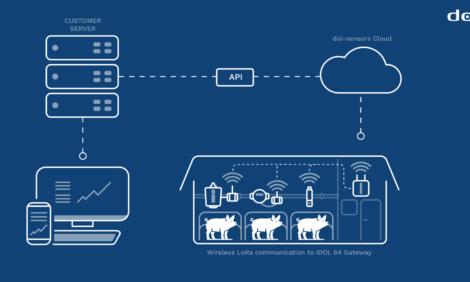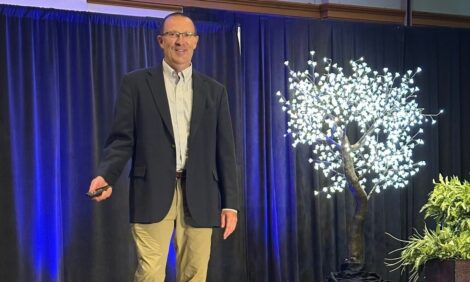



NAPRRS: Spread of PRRSV-1 in the UK
Geographic proximity and pig movement affect the spread of PRRSPorcine reproductive and respiratory syndrome (PRRS) control strategies are best informed by the correct identification of the highest risk pathways for virus introduction, allowing the most appropriate measures to be prioritized. Transmission mechanisms for PRRSV have been established, but mainly in areas where PRRSV-2 predominates (such as North America) rather than PRRSV-1.
The structure and scale of the pig industry and farm practices differs in the United Kingdom (UK) compared to North America, with smaller farms, lower pig densities and more outdoor units in the UK. Only PRRSV-1 has been detected in UK pigs to date, and few data are available to accurately inform the relative importance of different transmission routes for the spread of PRRSV in the UK.
The objective of a study by J.P. Frossard and colleagues, Animal and Plant Health Agency, UK, was to evaluate the contributions of geographic proximity, and links between farms through pig movements, to the spread of PRRSV, based on the genetic similarity of PRRSV-1 found in UK farms. The results of the study were presented at the 2024 North American PRRS symposium.
A dataset was compiled of 567 complete ORF5 sequences of PRRSV-1 from diagnostic submissions in the UK between 2014 and 2020. Pairwise comparisons of the sequences were produced detailing the distance between pairs and the percentage similarity. Each sequence was assigned to their holding identifier and its geographic origin. This was used to link holdings with Livestock Demographic Data Group pig movements data from a two-year period relevant to the submission date. These data were used to extract information on the estimated herd size and holding type, the number of pigs moved on during the two-year period, the number of holdings from which pigs were received and whether the holding could be identified as part of a large pig company.
From the 567 sequences, 265 unique holdings were identified, with 1 to 21 sequences per holding. The farms were generally representative of the geographical distribution of pigs in the UK, and the majority (88.7%) were of the largest size category and were either feeder or breeder-finisher farms.
The proportion of similar sequences was affected by the number of suppliers and pig movements a holding had; those with more movements (on and off) showed significantly greater sequence diversity, suggesting greater transmission of new strains onto the holding. Holdings with fewer unique suppliers generally had more similar sequences. When sequences from the same company were analyzed, only 4 of 17 holdings were significantly more likely to have similar sequences, suggesting that simply being within a company or production pyramid did not influence the sequence diversity as much as the direct movements of pigs and use of suppliers.
Investigating the potential for local spread, 10 of the 14 counties showed greater similarity within than outside the area. The results suggest that the number of sources and degree of pig movements affected sequence diversity on a holding. The results also highlight large-scale regional effects, with greater similarity from sequences within regions than in other regions. This suggests that reducing the number of suppliers to a holding and reducing movements outside of geographical regions could help reduce the spread of PRRSV-1 strains in the UK.







